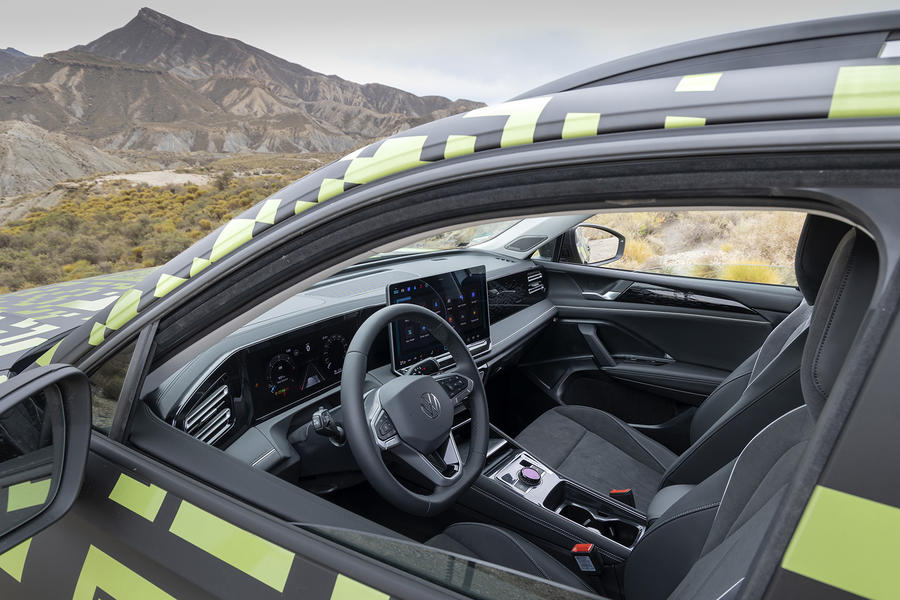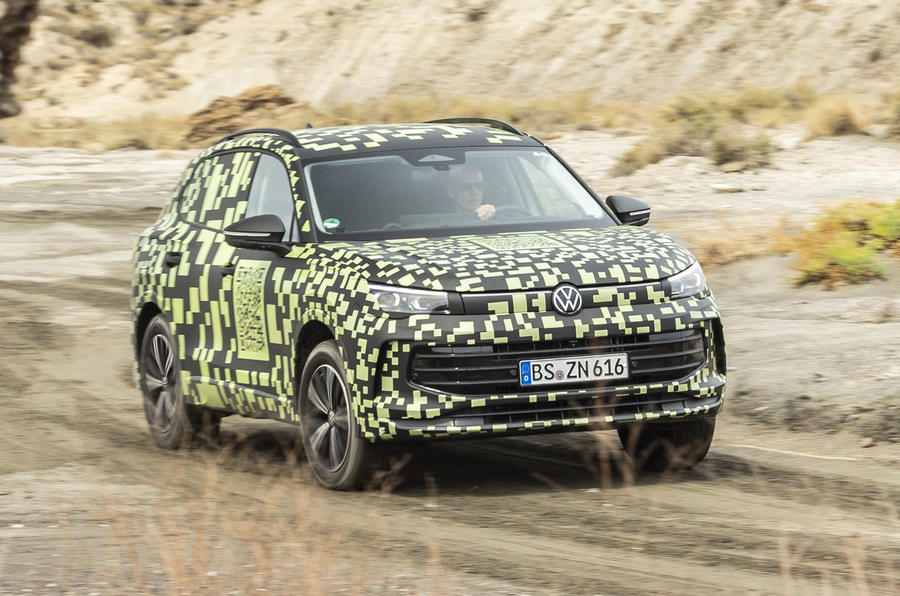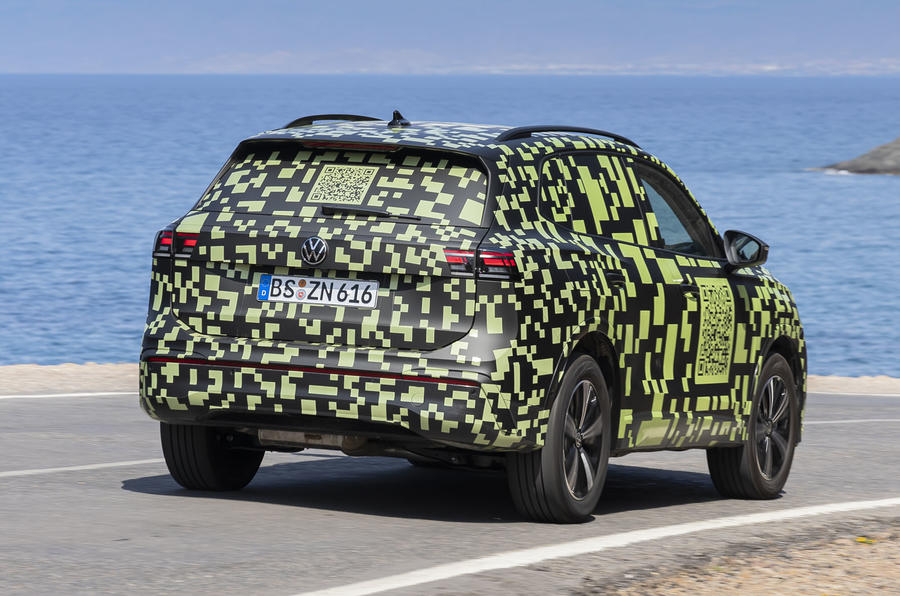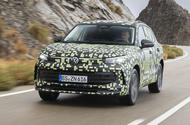Volkswagen’s best-seller reinvented with tech-heavy interior and trick adaptive suspension set-up
The third time is not always the charm, because sometimes it doesn’t need to be.
Take the third-generation Volkswagen Tiguan. There’s a lot riding on it, of course, but the first and second iterations of this Volkswagen Golf-based crossover were so overwhelmingly successful that it’s hard to imagine their successor being anything but. More than eight million Tiguans have sold since it launched in 2007, and it has been VW’s best-selling car since 2018.
So you’d maybe have imagined there would be a sort of ‘ain’t-broke-don’t-fix-it’ ethos that pervaded the glistening halls of the Wolfsburg R&D centre as Volkswagen brought the new-look crossover to near-production spec, as we’ve driven it here. But even though the powertrain offering is broadly familiar and the design – while substantially renewed – hardly revolutionary, it becomes clear pretty quickly that the new Tiguan is related to its predecessor in not much more than size and general silhouette.
Even through the heavy camouflage adorning the late-stage hack we drove, it’s plain to see the fruits of VW’s wide-reaching styling revamp, but it’s inside where the reinvention is most tangible and impactful.
The centrepiece of the totally overhauled cockpit is a new infotainment system, running through either a 12.9in or massive 15.0in screen, the latter of which you could say is a mite intrusive on your field of vision and slightly at odds with Volkswagen’s humble acknowledgement of well-publicised public feedback that it went too far with touch controls in its current cars. Less important but still irritating is the fact that it has been somewhat clumsily integrated into the top of the dashboard, its outsized form protruding in front of the edge of the digital display bezel to leave an awkward gap that would annoy me every single time I got in the car.

On a happier note, the climate control touch bar is now permanently hosted at the bottom of this screen, so you won’t have a head-on collision every time you try to adjust the air con, and the controversial heating control sliders are now backlit so you don’t have to drive home sweating or shivering in the dark. But maybe the most welcome introduction – or reintroduction – for 2024 is the array of good ol’ fashioned buttons and switches on the spokes of the steering wheel. The outgoing car’s frustratingly unresponsive haptic panels for cruise control adjustment and stereo volume were not, it is plain, a resounding success in customer clinics, and the Tiguan is among the early beneficiaries of a brand-wide return to analogue controls for such functions.
When it comes to motive power, the current 1.5-litre petrol and 2.0 diesel return, alongside a brace of petrol plug-in hybrids (201bhp or 268bhp) capable of rapid DC charging and with their electric range usefully boosted to just north of 62 miles, which bosses say means the Tiguan could be used predominantly as an EV, with the dino-drinker called upon solely to facilitate those occasional cross-country jaunts.
A quick moment of silence here for the 326bhp, all-paw Volkswagen Tiguan R, which has been consigned to the history books after a confoundingly brief, two-year existence, leaving the 4WD PHEV as the range-topper for the third generation. Done mourning? Let’s crack on.
Our ‘75-80%-finished’ prototype had the diesel motor, which felt as satisfyingly grunty (and – it must be said – as faintly agricultural) as it does in today’s car, though expected to bring slight improvements in performance and efficiency.

But the focus of this late-stage prototype drive is centred more around sampling the fruits of a drastic chassis overhaul, with slick new two-valve dampers promising to substantially boost both refinement and response compared to the outgoing car, controlled by a new Vehicle Dynamics Manager programme shared with none other than the Volkswagen Golf GTI. Spicy.
All of which translates into impressively comprehensive variability in the suspension settings, simply illustrated and operated by a new sliding scale on the touchscreen offering some 15 degrees of variation between the extremes of Comfort and Sport.
In the former, the Tiguan makes mincemeat of shattered tarmac and cobblestones, separating the vertical movements of wheel and chassis so cleanly as to completely transform the secondary ride and imbue this humble family hack with genuine premium panache. VW didn’t want a ‘magic carpet’ ride, engineers tell us, referencing the cloud-like qualities of the old Citroën DS as an example. Instead the aim was to drastically enhance straight-line comfort while preserving a sense of connection with the road, the latter largely achieved through gentle but tangible feedback over imperfections through the steering column and – to a far lesser extent – the seat base.
Configured as such, the ride is floaty and soft, but stops short of wallowing, and the roll is kept in check remarkably well for what remains at its core a near-1.7-tonne, 1640mm tall family car with scant (if any) requirement to offer any sort of dynamic reward.
Which rather begs the obvious question: how many thrill-seeking Tiguan 2.0 TDI owners are really ever going to swipe right on the interface and set the suspension to Sport? VW reckons it’s for those occasions where you’ve had a long day at work, the kids aren’t in the car and you fancy taking the long way home, but be under no illusion that the Tiguan has been reinvented as some sort of physics-defying, apex-hunting Q car for its third outing.

Even with the dampers in their stiffest setting and the steering tuned for more resistance and heft, there’s no getting away from the dynamic limitations posed by the lofty stature and high centre of gravity of an SUV, and anything beyond a mildly enthusiastic approach to cornering will have you sliding from bolster to bolster as the body tips and dives through the turns.
That VW has gone to such effort to provide this duality of character is much appreciated in the context of such a clinical and sterile market segment, but in truth, the harsh, jittery ride that you must contend with in exchange for slightly keener cornering feels like a bit of a rum deal, so you wonder whether drivers might have been happy with just, say, the leftmost two thirds of the slider scale.
At all times, though, the newly fettled steering rack is quick, precise and eminently predictable, helping to inspire confidence in more demanding environments. For the sake of thoroughness, we pushed hard into a couple of tight bends and failed to elicit any real sense of understeer – lending credence to VW’s notion that you could, if you really wanted, let the Tiguan’s hair down after dropping the kids off at school.
But being serious, that’s not what the Tiguan really needs to do – and prospective buyers will be immeasurably more concerned about its propensity to provide no-fuss, carry-all daily motoring without complaint. And indeed it will: matching its predecessor’s 2681mm wheelbase, but with 10mm more headroom and a 33-litre bigger boot than its predecessor, the Mk3 Tiguan continues to promise big SUV practicality in a relatively compact package – looking to uphold its billing as ‘the Golf of crossovers’.
Source: Autocar
